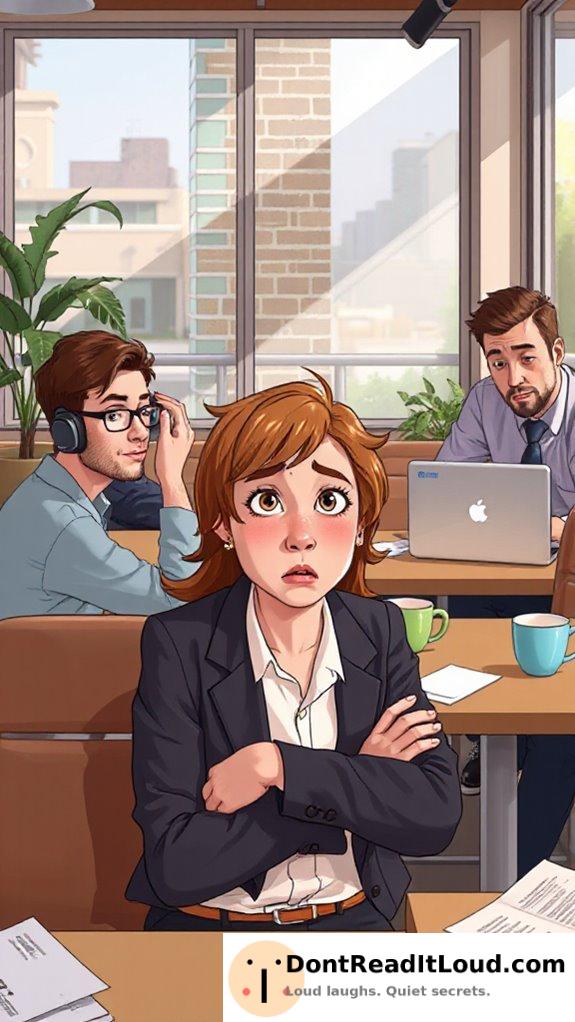
To fart silently in a crowded room, sit upright with your legs slightly apart to help relax your muscles and minimize sound. Opt for a cushioned seat or press against thick fabric to muffle any noise. Wait for background sounds, like laughter or music, to cover up any slips. If you need to, cough or shuffle your chair to distract others. Remain calm and act naturally so you don’t attract attention. These strategies can help you avoid uncomfortable situations.
Understanding Why Farts Make Noise

When gas leaves your body, it moves through the anal sphincter, and this rapid movement causes the vibrations that produce the sound of a fart.
The noise depends on your body’s unique anatomy and the type of gas inside you. If your sphincter is relaxed, gas escapes more quietly, but a tighter muscle creates louder vibrations.
The shape and size of your anal opening also affect the volume and tone of the sound. Gases with more nitrogen or sulfur can increase pressure and make farts noisier.
Knowing these factors helps explain why some farts are loud while others are barely noticeable.
Choosing the Right Position

You can’t always control when you need to pass gas, but your body position can affect how much noise it makes.
Sitting upright with balanced weight can help the gas escape quietly. Avoid slouching, since that tightens muscles and may lead to a louder sound.
If you’re seated, keep your legs slightly apart to reduce pressure. Crossing or squeezing your legs together can trap air and make it noisier.
Paying attention to your posture and leg placement can help you pass gas more discreetly.
Timing Your Release Strategically

If you want to fart without drawing attention, pay close attention to your surroundings before letting it out.
Scan the room and wait for a moment when there’s background noise—laughter, music, or chatter—to help mask any sound. Release it during these distractions rather than in a quiet moment.
Watch people’s body language; if someone is looking your way or moving closer, wait until they’re distracted.
Take slow, steady breaths to stay calm, since nervous movements might seem suspicious.
Try to act casual—don’t suddenly stiffen or shift positions, as abrupt changes can attract notice.
With good timing, you’ll blend in and avoid drawing attention.
Using Fabric to Muffle the Sound

Pressing your backside against a cushioned chair, thick blanket, or your own clothing can noticeably dampen the sound of a fart.
Choose soft, dense fabrics like wool, fleece, or heavy cotton, which absorb vibrations and muffle noise well. Thin materials such as denim or nylon won’t work as effectively, so aim for thicker padding when possible.
If you’re standing, try pressing your buttocks against a jacket or sweater tied around your waist. Using plenty of material between you and the air helps reduce noise and avoid embarrassment.
With good fabric and careful positioning, you’ll draw less attention.
Distracting With Other Noises

When you feel a fart coming and silence isn’t an option, distracting with another noise can help cover the sound. You don’t need to be obvious—just time it right.
For instance, you might cough, shuffle your chair, drop a pen, or clear your throat as you let it out. These simple noises usually blend in, making suspicious sounds less noticeable.
At parties or busy cafés, use background noise to your advantage—wait for laughter, clinking glasses, or a loud conversation.
In quiet places, you may have to get creative, like rustling papers or tapping your foot. Using background noise well is your best trick for escaping unnoticed.
What to Do if You Get Caught

Even with your best efforts, someone may still notice your silent escape. If you’re caught, stay calm—your reaction is important.
Good fart etiquette means acknowledging it with a brief, apologetic smile or a quiet “excuse me.” Avoid drawing more attention or making loud jokes, as that can make things more uncomfortable.
If you can, steer the conversation elsewhere or step away to ease the tension. Don’t blame others or act suspicious, since that usually makes everyone feel more awkward.
Conclusion
Now you know how to fart quietly in a crowded room. By learning why farts make noise, positioning yourself well, and timing your release, you can minimize sound. Use fabric to muffle noises, or create small distractions if needed. If someone notices, just stay relaxed and act natural. Everyone has these moments! With some practice and confidence, you’ll handle silent toots smoothly and keep your composure, even in a packed room.



